Basket weaving is a timeless craft, with its roots reaching deep into the annals of human history. Since civilization’s dawn, individuals have been ingeniously interlacing materials to construct baskets.
At Mondoro, we pay homage to this ancient tradition by employing five fundamental materials for our basket weaving: bamboo, rattan, seagrass, water hyacinth, and faux rattan. Each of these materials brings unique characteristics to the table, infusing our baskets with versatility and charm.
Table of Contents
- The Magic Of Materials: Discover The Fab Five Of Basket Weaving
- Frequently Asked Questions
- Related Content
The Magic Of Materials: Discover The Fab Five Of Basket Weaving
Basket weaving is an age-old art honed by countless generations across various cultures worldwide. Like a symphony where each instrument plays a unique role in creating a harmonious composition, the materials used in basket weaving have their unique characteristics.
Today, let’s delve into the world of bamboo, rattan, seagrass, water hyacinth, and faux or plastic rattan — the five stars that make basket weaving a joyous adventure.
Bamboo Materials And Basket Weaving
Steeped in tradition and revered for its immense strength, bamboo is an essential material in the basket weaver’s repertoire.

1. Renewable & Eco-Friendly: Bamboo is a fast-growing plant, with certain species able to grow almost a meter a day. This rapid growth rate makes it an incredibly sustainable and environmentally-friendly choice for basket weaving.
2. Strength & Durability: Bamboo is synonymous with resilience. Baskets made from bamboo tend to last for years, even generations, resisting wear and tear gracefully.
3. Flexibility: Despite its strength, bamboo can be bent and manipulated into intricate designs without breaking. This malleability enables artists to create a wide variety of shapes and patterns.
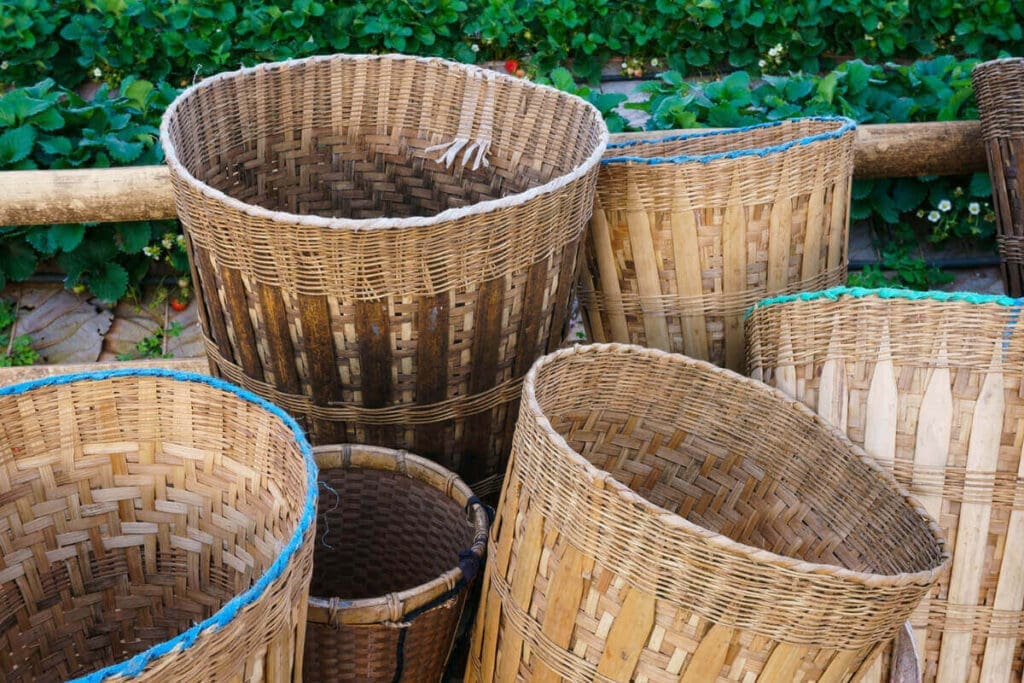
4. Aesthetic Appeal: The natural hue of bamboo adds a rustic charm to baskets, making them attractive décor items.
5. Availability: Given that bamboo grows abundantly in many regions around the globe, it’s often readily available and cost-effective.
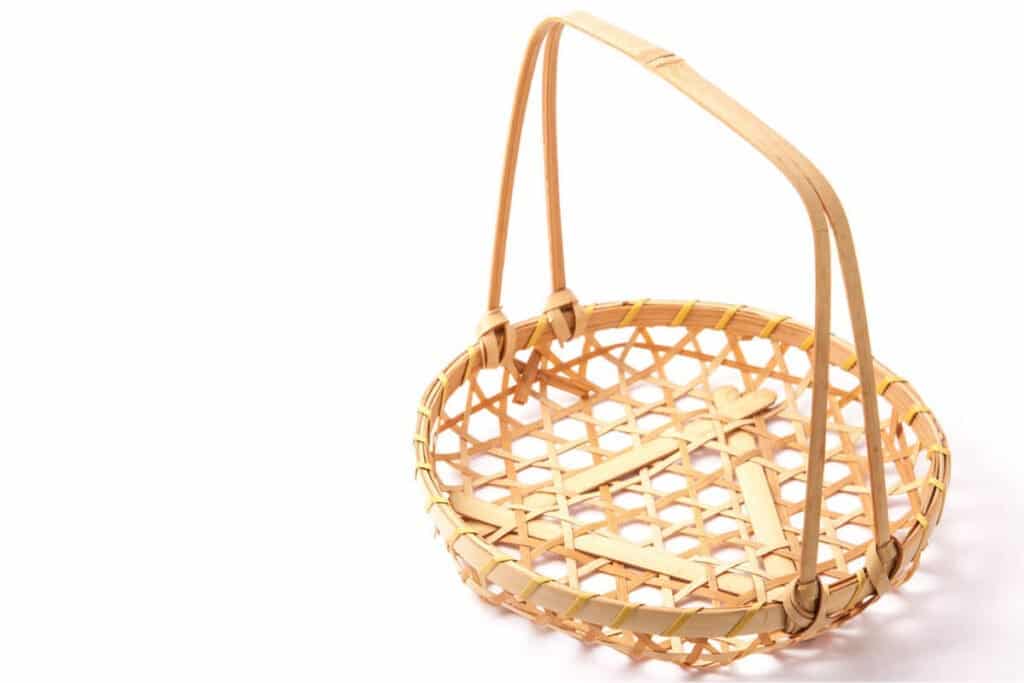
Rattan Materials And Basket Weaving
Next, let’s explore the world of rattan, a material known for its elegance and versatility.
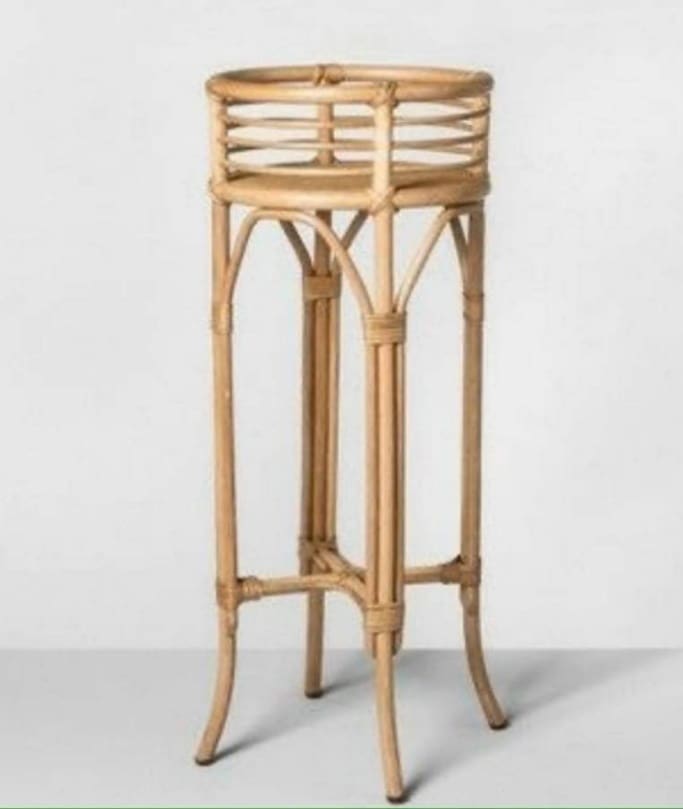
1. Lightweight: Rattan is remarkably light, making it ideal for weaving baskets that need to be portable.
2. Highly Durable: Rattan is robust, capable of withstanding heavy use without losing its shape or beauty. This makes it perfect for crafting everyday use baskets.

3. Easy to Dye: This material readily absorbs colors, allowing weavers to create vibrant, multi-colored baskets that are visually appealing.
4. Ease of Use: Rattan can be easily manipulated, making it an excellent material for novice and experienced basket weavers.
5. Natural & Sustainable: Harvested without harming the parent plant, rattan is a sustainable choice for eco-conscious weavers.
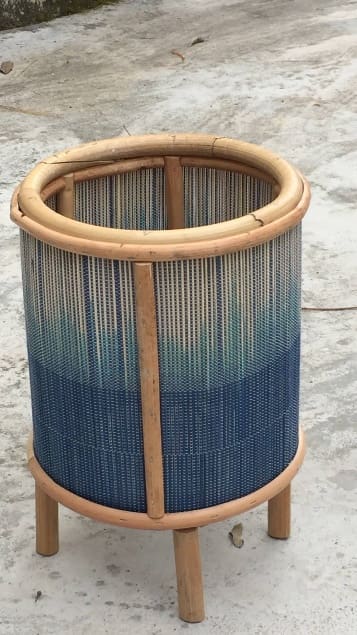


Seagrass Materials And Basket Weaving
Famed for its rustic charm, seagrass offers basket weavers a material that is as fascinating as it is beautiful.
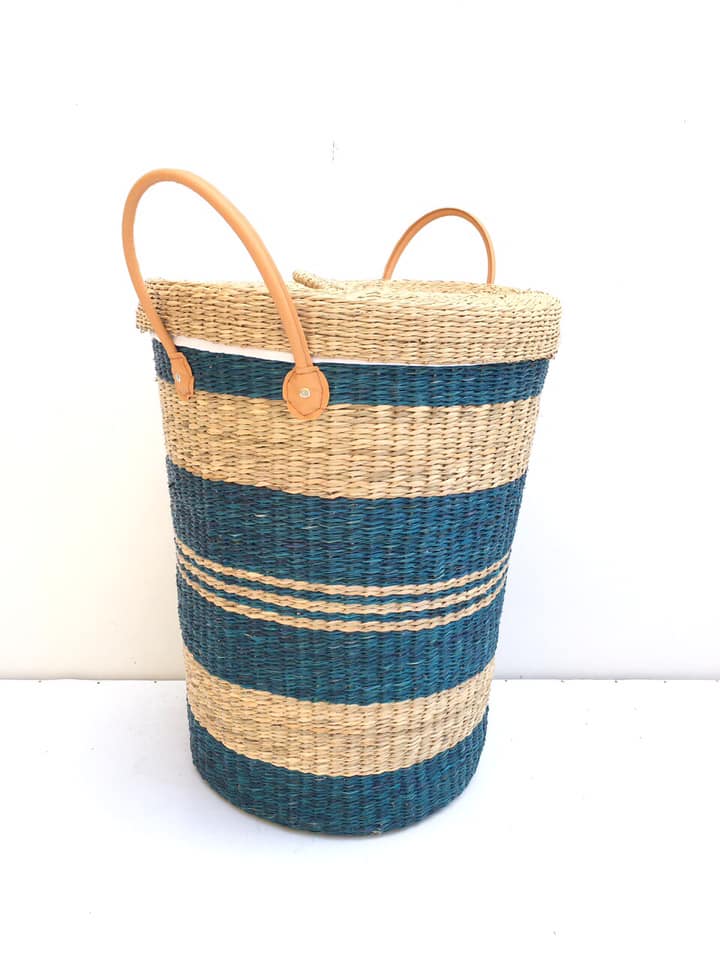
1. Unique Texture: Seagrass brings a unique texture to baskets, adding to their aesthetic appeal.
2. Durable: While it might not be as hardy as bamboo or rattan, seagrass still boasts considerable durability.
3. Odor Absorbent: Seagrass can naturally absorb unpleasant odors, making baskets woven from this material ideal for laundry or waste paper.

4. Eco-Friendly: Being a renewable resource, seagrass is an excellent choice for those who value environmental sustainability.
5. Distinctive Fragrance: Seagrass imbues baskets with a fresh, ocean-like fragrance, lending them a unique appeal.
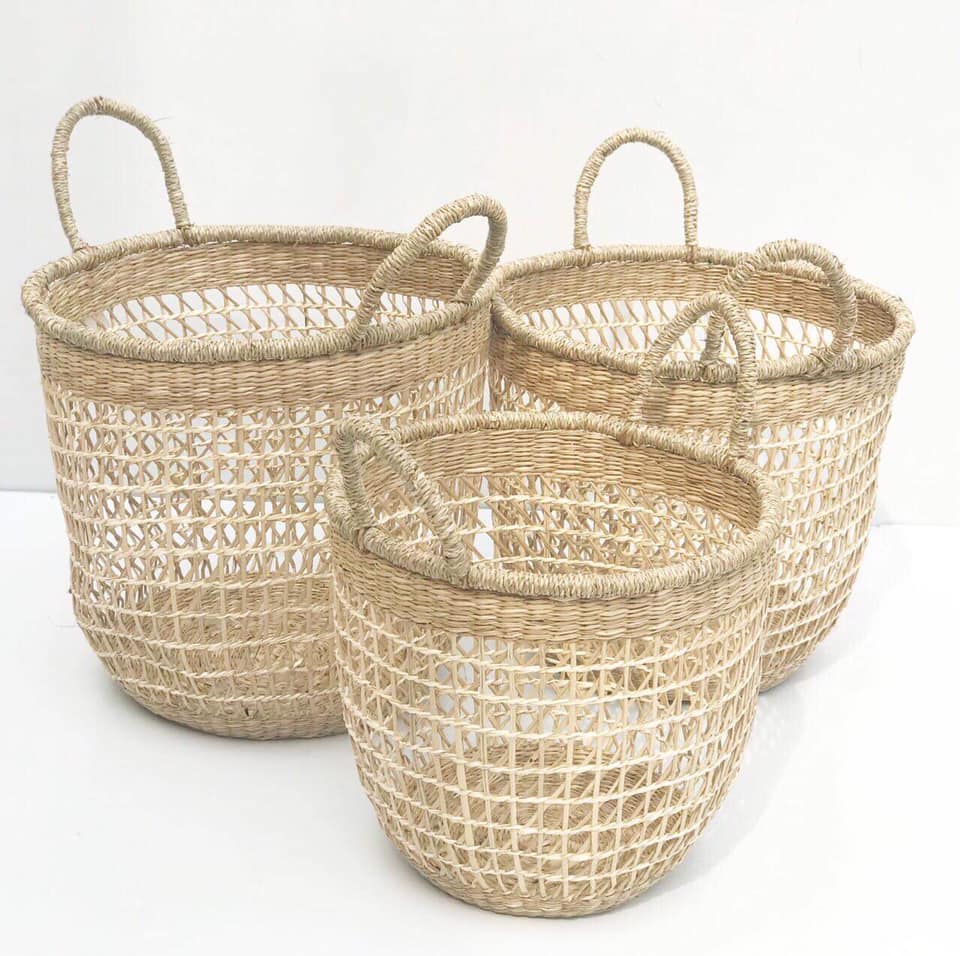
Water Hyacinth Materials And Basket Weaving
Water hyacinth is an often overlooked material with much to offer regarding basket weaving.
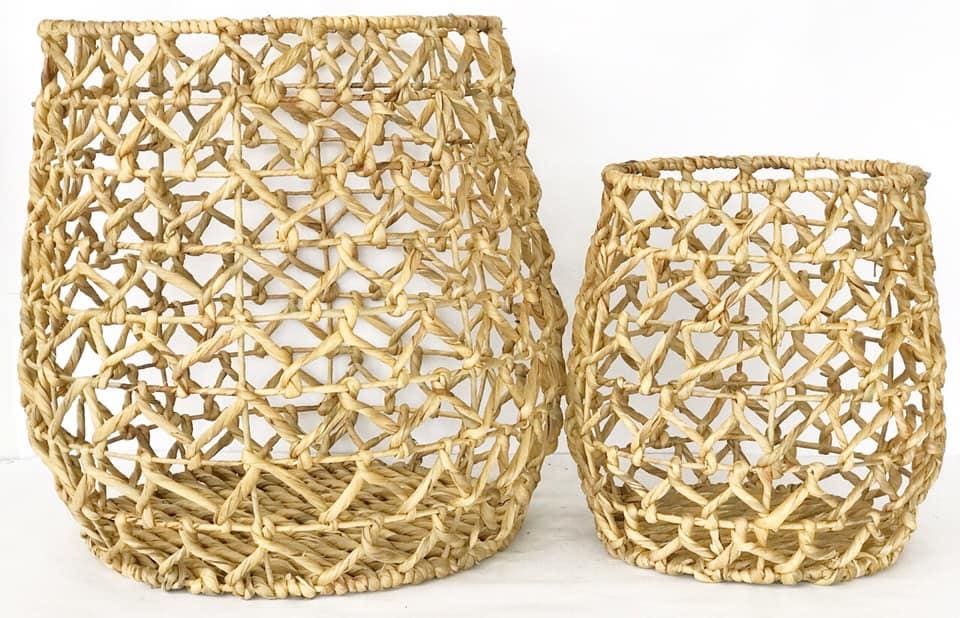
1. Abundant & Renewable: Water hyacinth is a fast-growing aquatic plant often considered invasive in many regions. Weavers use it as a weaving material to control its spread.
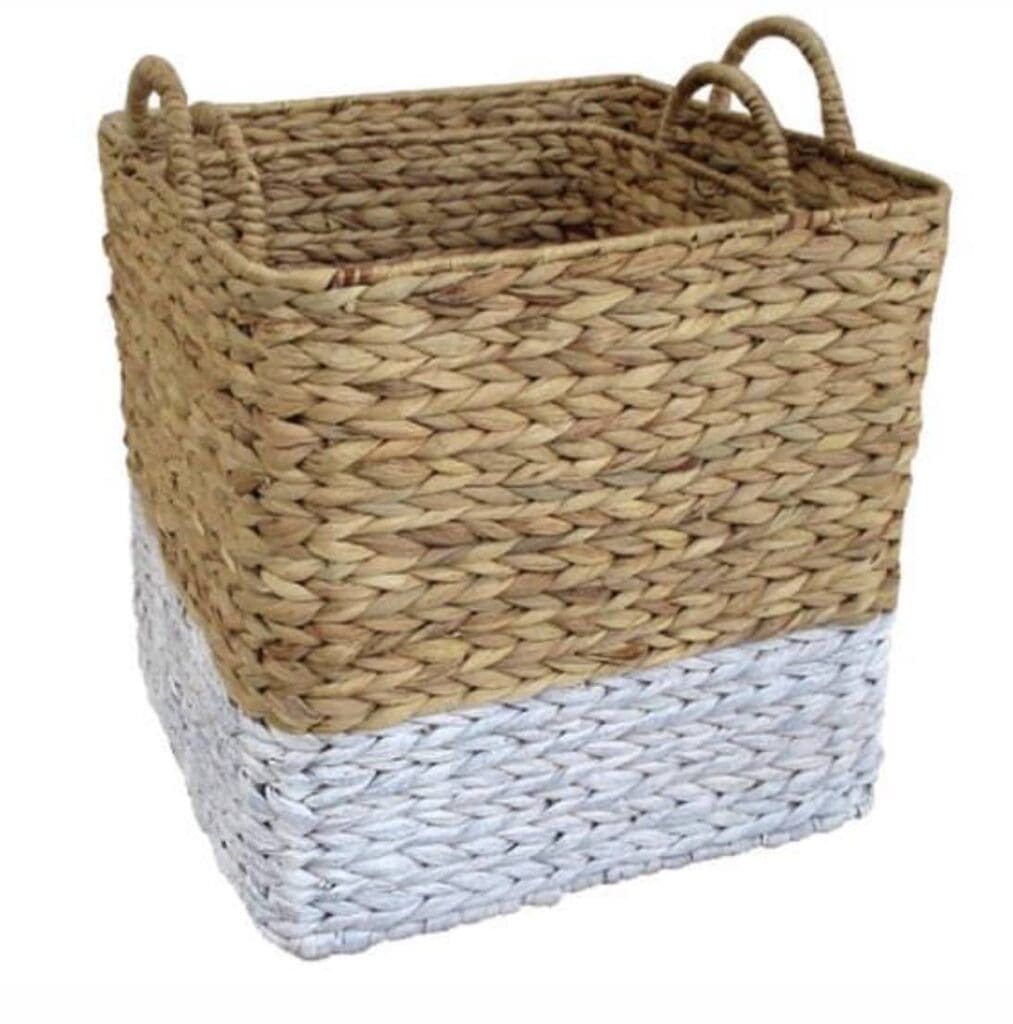
2. Flexible: Water hyacinth fibers can be twisted and turned into myriad intricate designs, making them a favorite among creative weavers.
3. Beautiful Natural Color: The golden-brown hue of dried water hyacinth lends a distinctive charm to baskets.
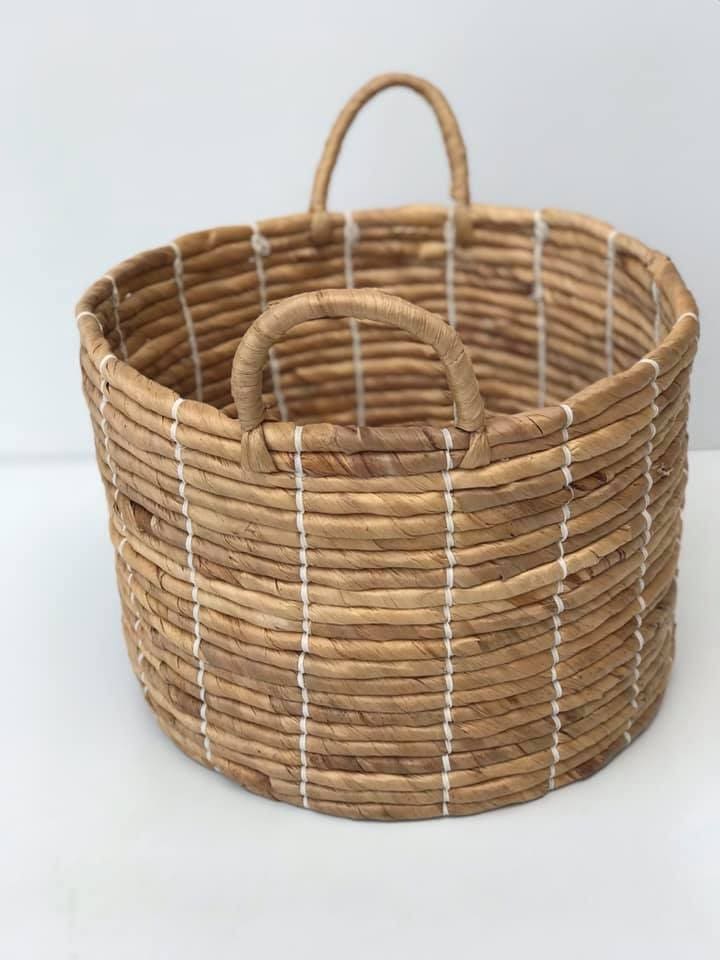
4. Lightweight: Baskets made from water hyacinth are usually lightweight, making them easy to carry and maneuver.
5. Softness: Unlike other materials, water hyacinth has a soft texture, making baskets woven from it comfortable to handle.
Faux Or Plastic Rattan Materials And Basket Weaving
Finally, there’s faux or plastic rattan for those seeking a modern twist on the traditional art of basket weaving.
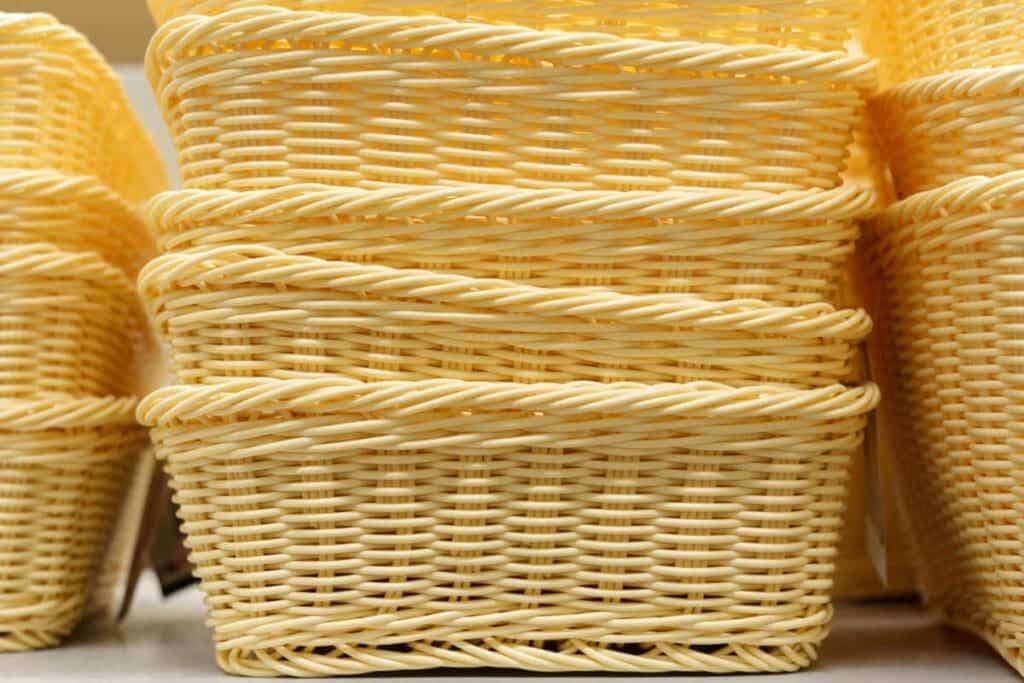
1. Weather-Resistant: Plastic rattan is unaffected by elements like water and sunlight, making it ideal for outdoor use.
2. Easy Maintenance: Baskets made from faux rattan can be easily cleaned with a damp cloth, requiring minimal maintenance.
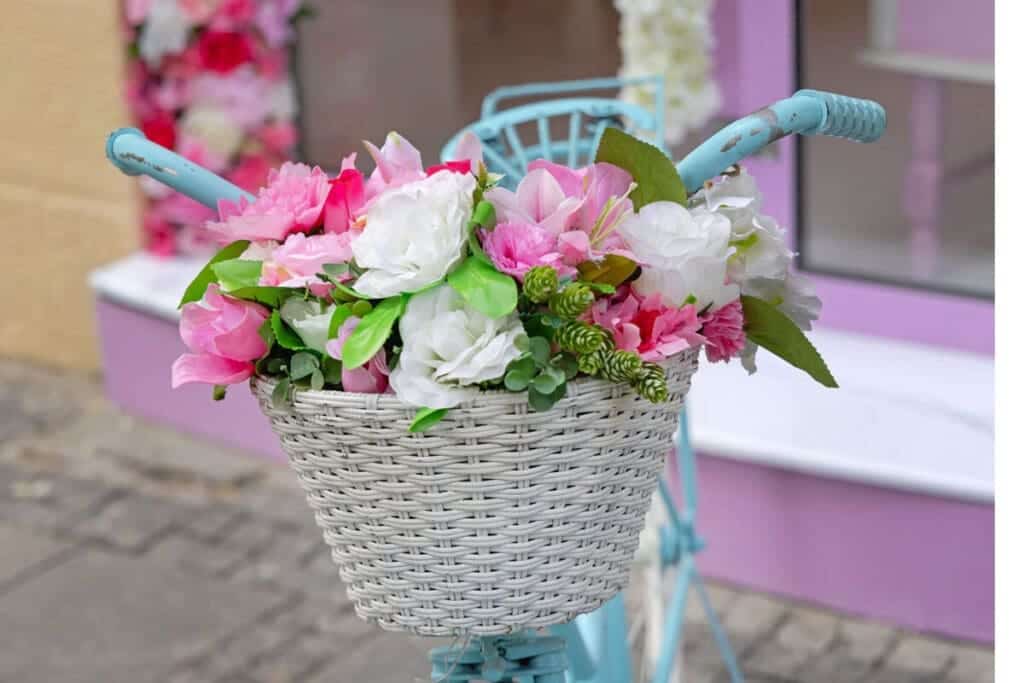
3. Versatile: Plastic rattan can mimic the appearance of natural materials while offering a more comprehensive range of colors and textures.
4. Durability: Faux rattan baskets are highly durable, making them suitable for heavy-duty use.
5. Cost-Effective: Plastic rattan is often cheaper than its natural counterparts, making it an affordable option for many.
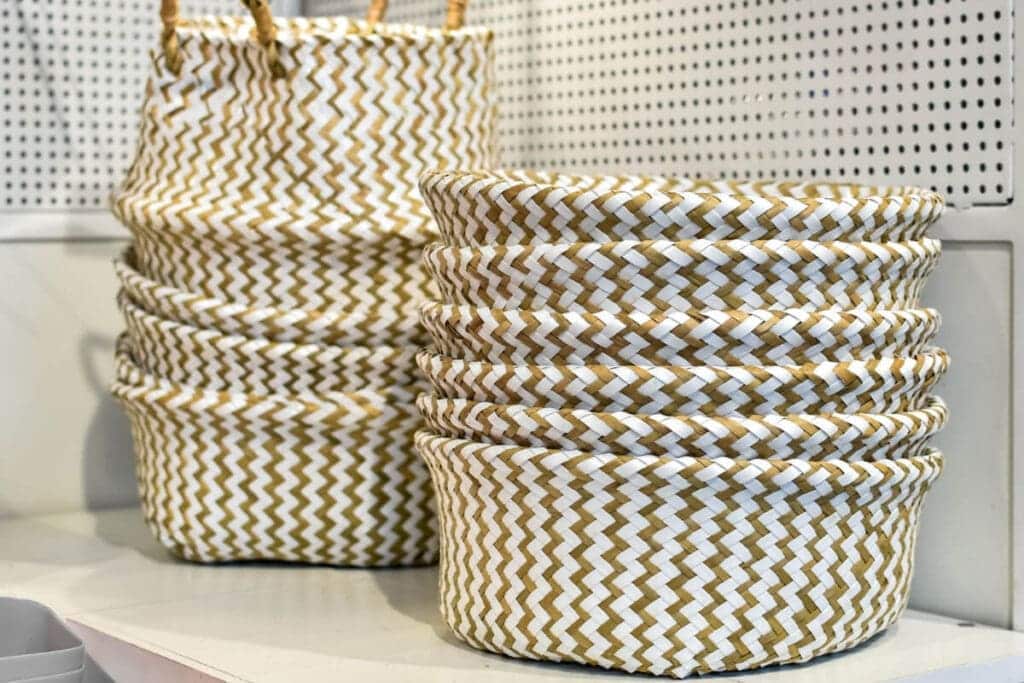
Mondoro is proficient in utilizing all five of these materials to not only craft intricate baskets but also to create a plethora of other home decor products. We provide diverse natural materials, offering many choices tailored to your home decor and furniture requirements. With Mondoro, your home aesthetics are in capable and creative hands.
If you are interested in seeing how Mondoro can help you with your basket weaving and other home decor products – we would love to talk to you about how we can help you.
Find out more about how Mondoro can help you create, develop, and manufacture excellent home decor and furniture products – don’t hesitate to contact me, Anita. Check out my email by clicking here or become a part of our community and join our newsletter by clicking here.
Mondoro gives out a FREE Lookbook to anyone interested. You can receive a copy of our latest Lookbook by clicking here.
Listen to our Podcast called Global Trade Gal. You can find it on all major podcast platforms. Try out listening to one of our podcasts by clicking here.
Subscribe to our Mondoro Company Limited YouTube Channel with great videos and information by clicking here.
Frequently Asked Questions
What is the significance of basket weaving in human history?
Basket weaving has a rich history that dates back to ancient times. It played a crucial role in various civilizations, serving practical purposes such as storage, transportation, and even artistic expression. Understanding this historical significance adds depth to the craft.
Why choose bamboo as a material for basket weaving?
Bamboo is a popular choice due to its sustainability, flexibility, and strength. It’s a fast-growing plant, making it an eco-friendly option. Its natural color and texture also contribute to the aesthetic appeal of woven baskets.
What makes rattan a unique material for basket weaving?
Rattan is a vine-like plant known for its durability and flexibility. Its slender and sturdy nature makes it an excellent choice for weaving intricate patterns. Additionally, rattan lends a natural and organic look to baskets, enhancing their overall visual appeal.
How does seagrass contribute to the versatility of woven baskets?
Seagrass is valued for its smooth texture and vibrant colors. Its flexibility allows weavers to create various patterns and designs. Seagrass baskets are not only functional but also aesthetically pleasing, adding a touch of natural elegance to any space.
What are the characteristics of water hyacinth that make it suitable for basket weaving?
Water hyacinth is known for its strength and resilience. As a material, it adds a unique texture and visual interest to baskets. Its natural brown hue and ability to withstand wear and tear make it a practical choice for crafting durable and beautiful woven items.
What is faux rattan, and how does it compare to natural rattan in basket weaving?
Faux rattan is a synthetic alternative designed to mimic the appearance of natural rattan. It offers the look and feel of rattan but often comes with added benefits like increased durability and resistance to weathering. This makes faux rattan a versatile option for both indoor and outdoor use.
Are Mondoro’s baskets environmentally friendly?
Yes, Mondoro emphasizes sustainability by using materials like bamboo and water hyacinth, which are renewable and eco-friendly. This commitment ensures that the production of baskets minimizes environmental impact.
How does the use of these materials contribute to the charm of Mondoro’s baskets?
Each material employed by Mondoro brings its own unique charm to the baskets. The combination of bamboo, rattan, seagrass, water hyacinth, and faux rattan allows for diverse textures, colors, and patterns, resulting in baskets that are not only functional but also visually appealing.
Can these baskets be used for practical purposes, or are they purely decorative?
Mondoro’s baskets are designed with both functionality and aesthetics in mind. While they can serve as stylish decorative pieces, they are also sturdy and well-crafted for practical use, such as storage or organizing various items in a home or office setting.
Where can one purchase Mondoro’s woven baskets?
Mondoro’s woven baskets can be purchased directly from their official website or through selected retailers. The website provides detailed information about each product, allowing customers to choose the perfect basket based on their preferences and needs.
Related Content
The Tre Natural Color Trend for Home Decor and Home Furniture
Tre means bamboo. But it also helps to symbolize the strength and ability to be resilient. The Tre trend concerns nature as part of your life and home. The Tre natural color palette has a lot of lush green tones. The Tre trend can be used with other home decor and furniture trends.
You can discover more by reading The Tre Natural Color Trend for Home Decor and Home Furniture by clicking here.
Can Cane Furniture Be Left Outside?
Cane furniture is not outdoor weather-resistant; manufacturers produce outdoor weather-resistant furniture from synthetic, not natural, cane materials. Throughout history, cane furniture was in outdoor settings in many parts of the world; during that time, there was no genuinely outdoor weather-resistant furniture.
You can learn more by reading Can Cane Furniture Be Left Outside? by clicking here.
What Is The Difference Between Rattan, Wicker, And Cane Furniture?
Rattan is a type of palm or vine that grows in the jungles of Southeast Asia. Rattan refers to a kind of natural material. Wicker is a type of weave using rattan materials. Cane also refers to a type of weave that is usually woven using rattan material.
You can learn more by reading our blog What Is The Difference Between Rattan, Wicker, And Cane Furniture? by clicking here.

